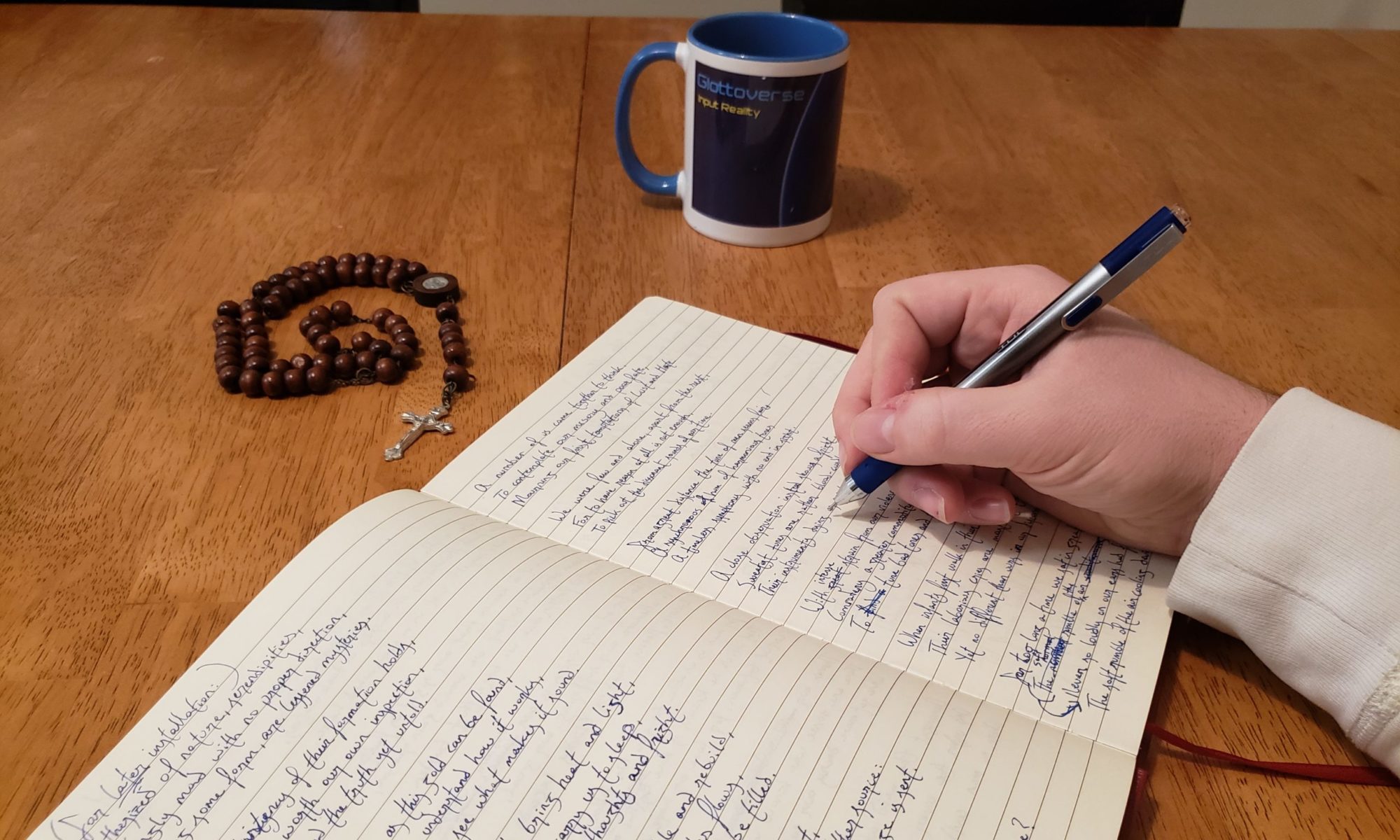…and some suggested resources to accomplish the task.
First Things First
The first thing someone tells me after I share with them that I am a Spanish teacher is “Spanish, huh? I always wanted to learn Spanish but I left off at ¿Dónde está el baño?” It’s like people have to justify why they aren’t currently fluent in a second language. To begin with, stop. It’s okay that you only know the word for goodbye, or the word for bathroom. Start there.
Your next goal, so long as you are studying a language and gaining skill, is finding comprehensible input (CI). CI is language that you can mostly understand with a little difficulty. It is language supported by lots of external clues, images, or some other kind of context. It stretches and grows how much you can understand by always being one step ahead of you. How much of a language you know will come directly from how much of a language you have interpreted through listening or reading. Without comprehensible input, you’re out of luck.
So remember, regardless of what you do for language, your first and main objective is to find and attempt to interpret language at your level or right above it. Once you find such good input, rinse, lather, and repeat. I’ve seen people talk about children’s books as boring, repetitive, and useless, but the great trick of language education is that books or other input formats with these sorts of structures are exactly what a language learner needs, and they need to repeat it often in order for it to work. So it might be boring because “ugh I know this word” but the reality is that more repetitions in the target language are exactly what you need as a language learner. Silly? Just easier to understand.
The End-All Be-All Definitive Way to Learn a Language:
Comprehensible Input (not output!)
This video, by a dedicated Spanish Professor, has everything you need to know about how to learn a language:
I generally HATE videos or articles that say something like “Want to learn a language? Learn this ONE SECRET METHOD that nobody knows about except my business (lookin’ for that $$$)” So much that I thought for sure it was never safe to make such a claim.
In short, this man doesn’t claim one secret method, per se. He describes a whole attitude, a focus, and a compilation of efforts to achieve language fluency. But, and here is the critical thing, he manages to summarize language learning in just one hour. Not only does he provide the method, he proves it himself. This man started to learn Arabic in the Fall of 2016, and 365 days later he was completely fluent in Arabic. He’s not shy about the difficulty, either (another reason to trust it). He puts in over 1000 hours of study over the course of a year. A regular high school, presuming they use all of their instruction time with comprehensible input, only provides 140. Spanish doesn’t take 1000 hours of study, according to the Department of State, that figure being something like 700 instead. But even 700 compared to 140 is a big difference.
Here are the main points he provides:
- Duolingo and Rosetta Stone are a complete waste of time. Now, I still have Duolingo posted on this website as a method of learning language because he puts forth the premise “Something is better than nothing.” For me, learning Irish, this rule is definitely the truth. I would argue it has some utility, but he even says it’s just two times the work and half the benefit compared to regimented comprehensible input.
- Find a language “parent.” Find someone that is willing to spend a lot of hours with you, that will speak to you only in the target, or desired, language.
- Get magazines and children’s books. Have your language “parent” talk about the pictures in the magazines and the books (not read them). As a participant, you should learn quickly to ask:
- Why?
- What is she/he doing?
- What is it?
- Your language “parent” should also ask you many ‘yes/no’ questions about the pictures that you look at together.
Obviously there is way more to the video, but these are his main takeaways. It is perhaps costly to find someone who is a language parent. His main suggestion is to opt for language ‘exchanges,’ where you meet with someone who wants to learn your native tongue, and you do this method in reverse for them, just in English. If you are a student, then your teacher should obviously be such a language “parent” for you!
Duolingo

Duolingo is a free resource, accessible by anyone and everyone that can see this website. Duolingo primarily teaches foreign language through translation. Translation, mind you, is not input, per se. You aren’t getting a steady stream of comprehensible input. You are repeatedly translating the same content over and over. With the right mindset, just as any other language instruction method, you can use it for input’s sake and get better at language. The biggest resource that Duolingo provides is that it is a free, fun, and accessible application. There isn’t much that beats free.
Additionally, there are extra perks for those who want to try to learn a more popular language, such as Spanish or French. Duolingo recognizes the need for various forms of input, to at least some degree. For Spanish and French and other larger languages there are things like stories and practice conversations in addition to the regular translation practice.
In terms of input, then, it isn’t the best resource. In terms of accessibility? It’s amazing! It also tests your mettle. If you can’t keep up with the fun and accessible interface of Duolingo to introduce yourself to the language, then you likely won’t have the resolve to do more serious language skill education.
Their website is simple, https://duolingo.com, and creating a profile takes seconds. If you want their app, you just have to search for “Duolingo” in your phone’s app store.
Stories
Stories, like the ones accessible on this website, are a perfect way to build up your fluency with language. Once you’ve maneuvered the soft and easy translations of Duolingo and know some basics, reading stories and other leveled readers help increase in proficiency and skill.
If you’re using Duolingo and you are studying a larger language such as Spanish, you can start with the stories accessible there. If you want to look for more stories, I would recommend looking for leveled readers. A cool place to start might be at https://fluencymatters.com, where you can look at Comprehension Based Readers. These stories are specifically targeted at lower level language users who are trying to build comprehension. You can also look for similar readers at https://www.tprsbooks.com. The unfortunate aspect here is that most of the content you will find are for larger scale languages. If, like me, you are learning a language such as Irish Gaeilge, you won’t find these sorts of readers (if you do know, please direct me to where, as I’m dying to find some). The solution? Help me out and learn the language to get writing them!
You might also be lucky enough to have a classroom teacher who leads you in an input setting, and you might have the luxury of that teacher creating stories for or with you. Cherish them!
Generic Tips
- Community
- Make some friends around the language. Either make friends with people who speak the language or make friends with people who are willing to learn it alongside you. Set a regular meeting time, and commit to spending time with those people just around the language. Language can be used in isolation, but language is inherently designed to function within community, so either find it or make it!
- If you have resolved to work with Duolingo, navigate to https://events.duolingo.com. There you can see if a language learning community already exists around your desired language of choice, and just join what is already in motion!
- Time
- Don’t disillusion yourself. Even if you think you want to learn a language, recognize that the process is going to take time. Got a trip to Costa Rica in a month and you want to get conversational in Spanish? Yeah, the only way that’s happening is with some really intense hours of concentrated input and opportunity for interaction with other speakers of Spanish. When the big language education software companies try to advertise their non-input focused software to you and say that you can speak Spanish in two weeks (yeah, I’m looking at you, Babbel+), you can bet that these are solid advertising gimmicks to get you to use their software. You’ll certainly start speaking Spanish within two weeks, but it will be something like a few phrases, not a significant amount of the language.
- Attitude
- Your success in learning a language, beyond the measure of time, will be directly related to your attitude. Think of attitude as a sort of posture. When it comes to learning language, one must have an open posture and be receptive to what comes their way. If one is closed off to the potential of success in the face of long study, then they will only make it worse on themselves. If you are in a classroom setting you might be blessed with a teacher who caters to your interests and makes the attitude adjustment easy, but if you are an independent learner, you will have to bear through content that does not make an attitude adjustment easy. Either way, your determination to overcome obstacles is a necessity.
